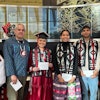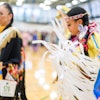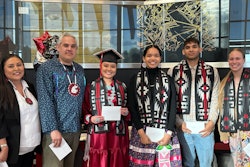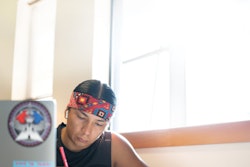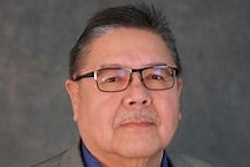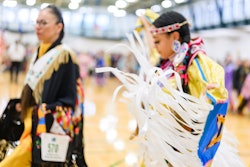Every fourth Thursday in November, Americans find time for family, sharing food, traditions and language. Stories of that iconic first Thanksgiving evoke images of Pilgrims and Indians, but as is so often the case with history and popular culture, some details are missing. Two of the biggest ― those Indians were the Wampanoag, and within two centuries, their language ceased to be spoken.
Today, the Wampanoag and other Native American tribes give thanks for those who fight to bring their languages home again.
Food is not the only thing humans crave. Losing your language creates a hunger for that piece to make you whole again. This hunger is seen in so many U.S. indigenous communities. It is a hunger to reconnect with heritage, to regenerate culture and traditions, and to revitalize heritage languages.
Language is a powerful badge of identity. The Wampanoag know this. The restoration of their language, powered by Jessie Little Doe Baird and the Wôpanâak Language Reclamation Project, includes summer language camps where children experience their tribal language ‘set within a cultural context,’ for example, learning how to plant, harvest and cook traditional foods. These foods, plants and animals are familiar to those of us who are not Native Americans. Words like squash, persimmon, hickory, chipmunk, skunk and possum made their way into English in a route that originated in different Algonquian languages, writes linguist Ives Goddard.
Native American languages have more to them than words borrowed into English. Whether the language is Norwegian or Navajo, fluent speakers weave words into tapestries that express the full range of human experience, explain the natural world and its phenomena, and preserve memories across the generations. When a language ceases to be spoken, it means that intergenerational transmission of language, culture and memories gets interrupted.
In the centuries following European contact in North America, there was a series of destructive interruptions of Native American families. Particularly tragic were Indian boarding schools, which removed children from their families and sent them to schools off the reservation. Forbidden from speaking their Native languages, even amongst themselves, many Native students vowed that they would never teach it to their children. Physical and other punishments for violating school edicts linked trauma to Native American language use for generations of young indigenous children.
UNESCO classifies a language as safe when it is ‘spoken by all generations; (and) intergenerational transmission is uninterrupted.’ Boarding schools disrupted the acquisition of Native languages in the home. Decade after decade, intergenerational transmission declined, catastrophic to Native American languages.
